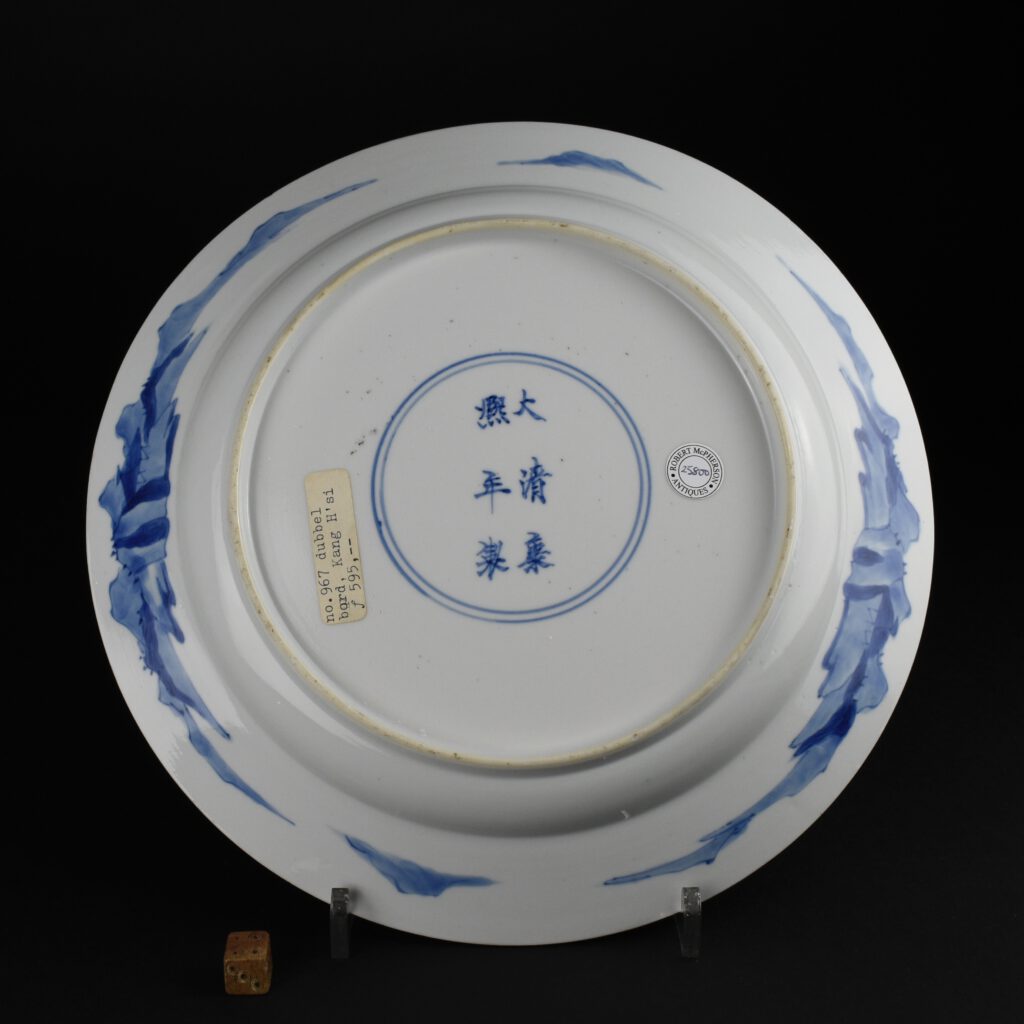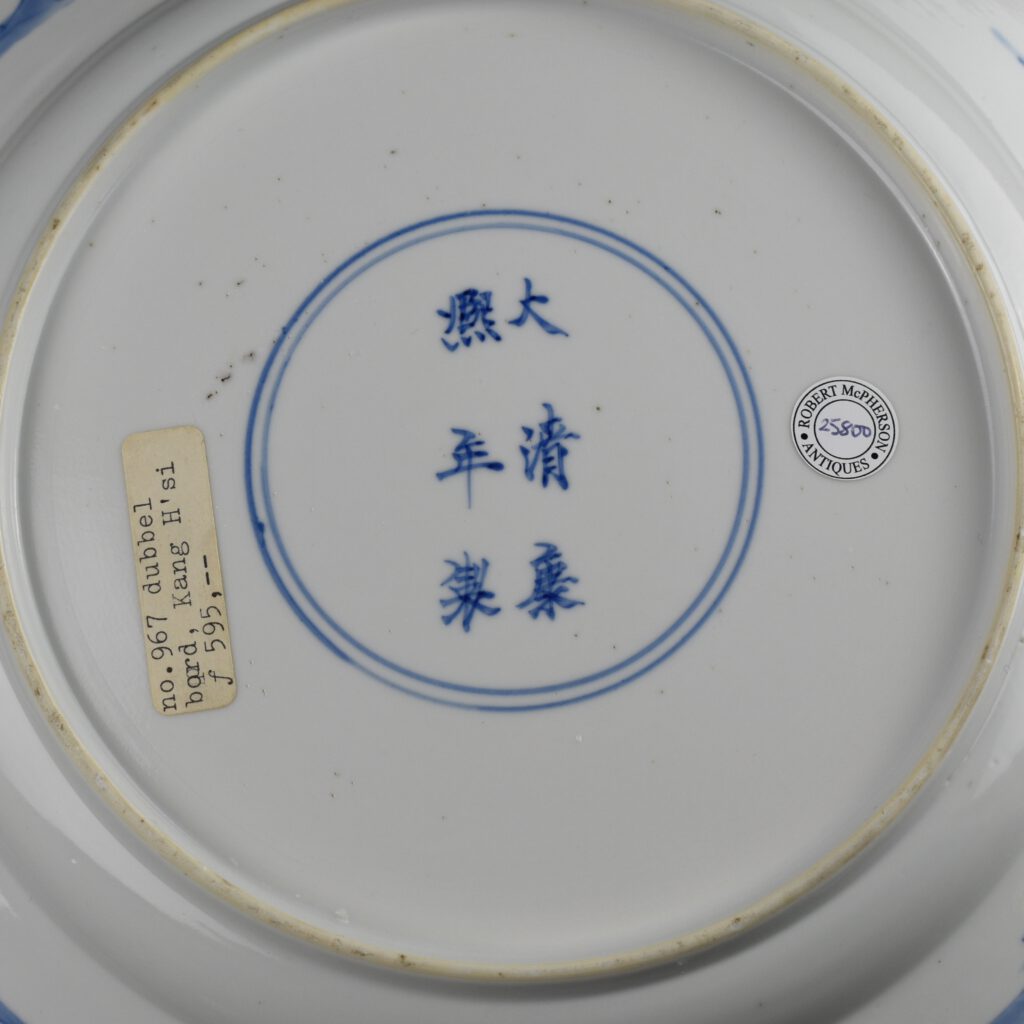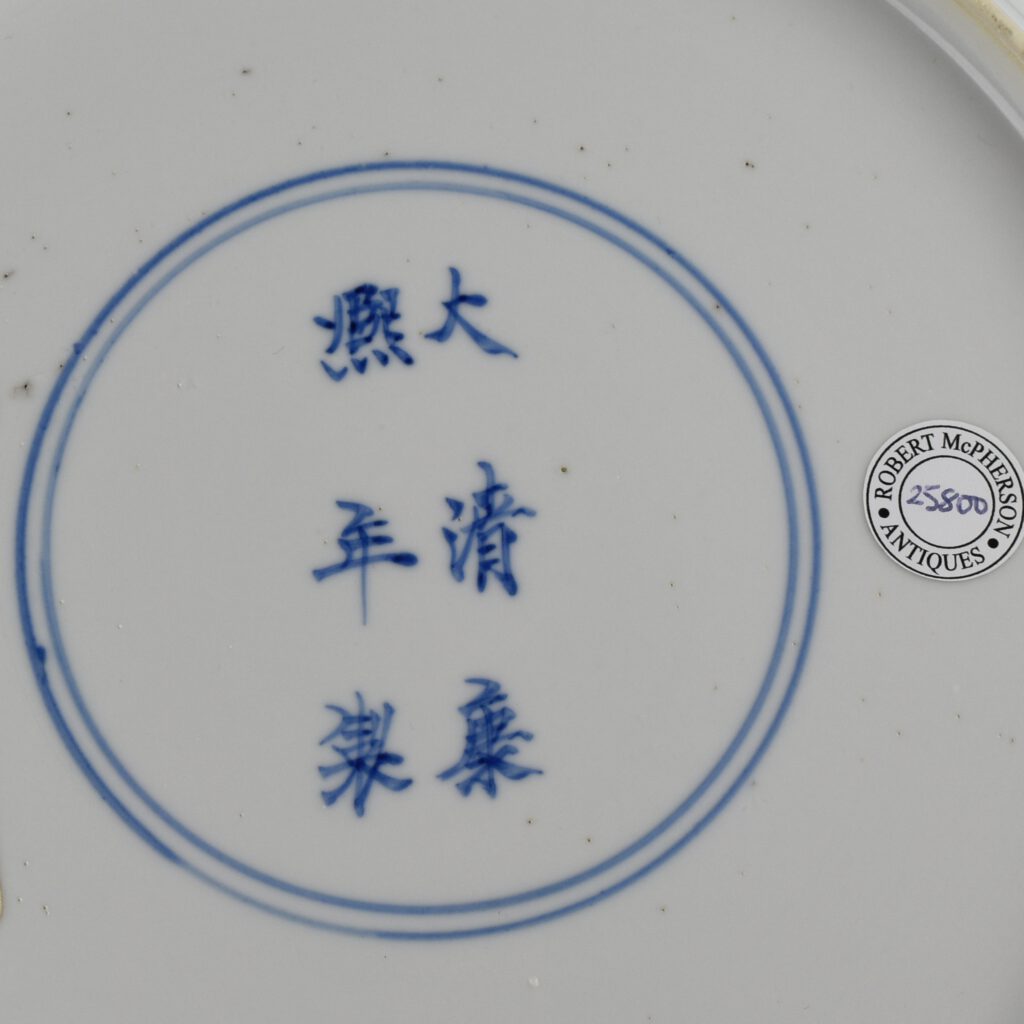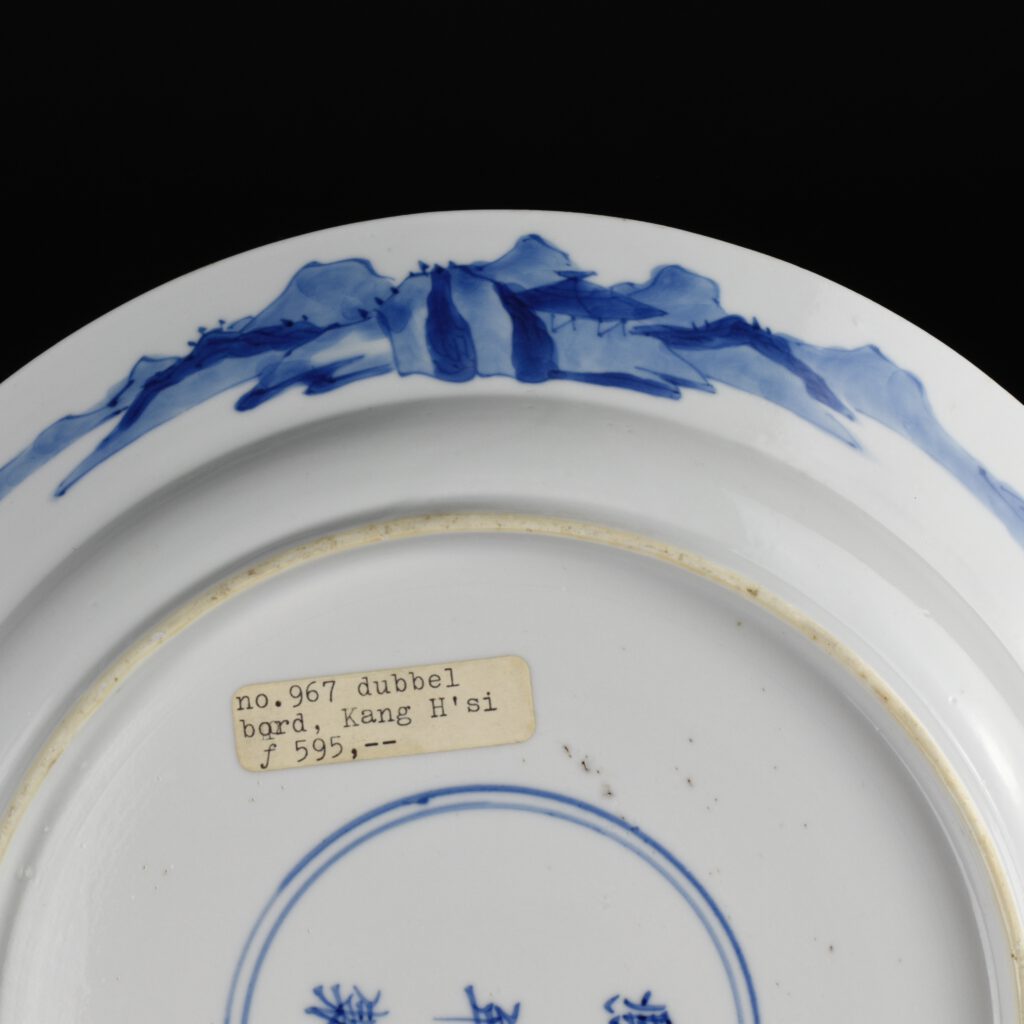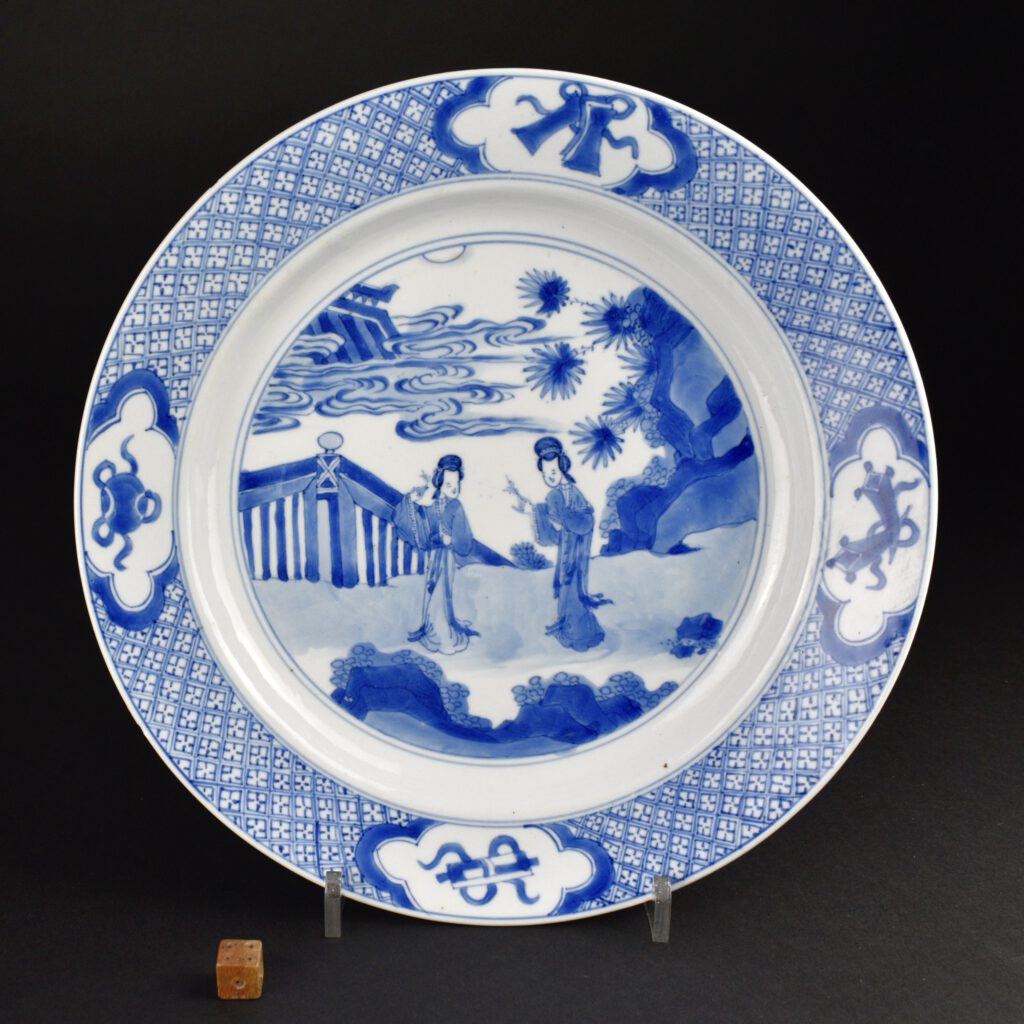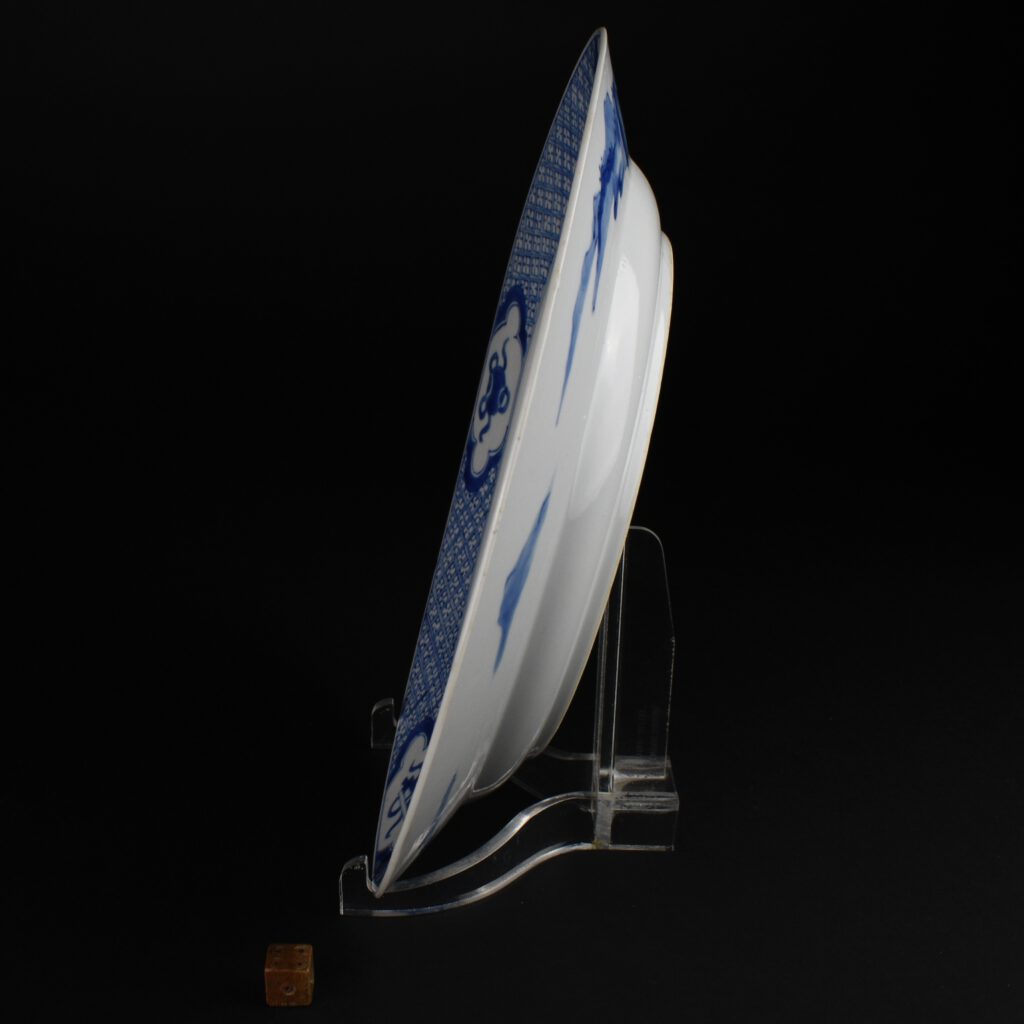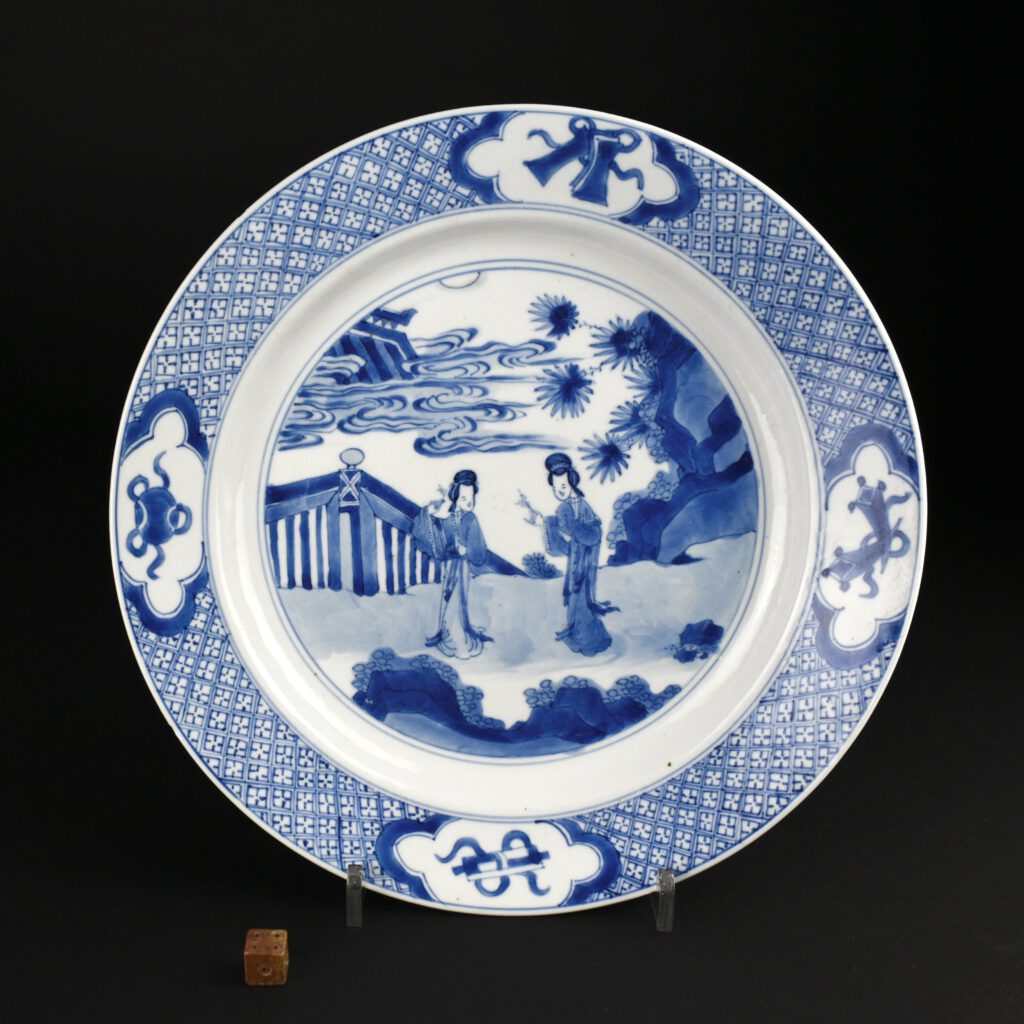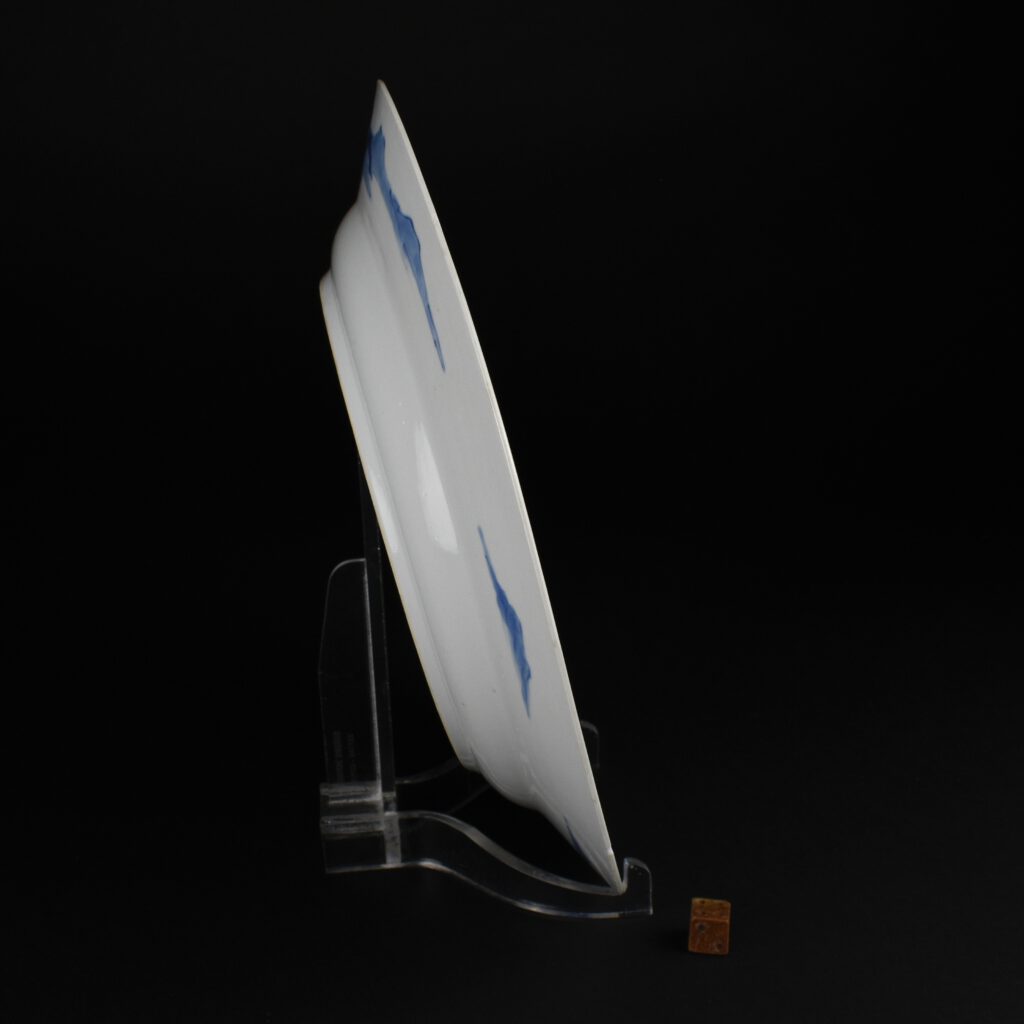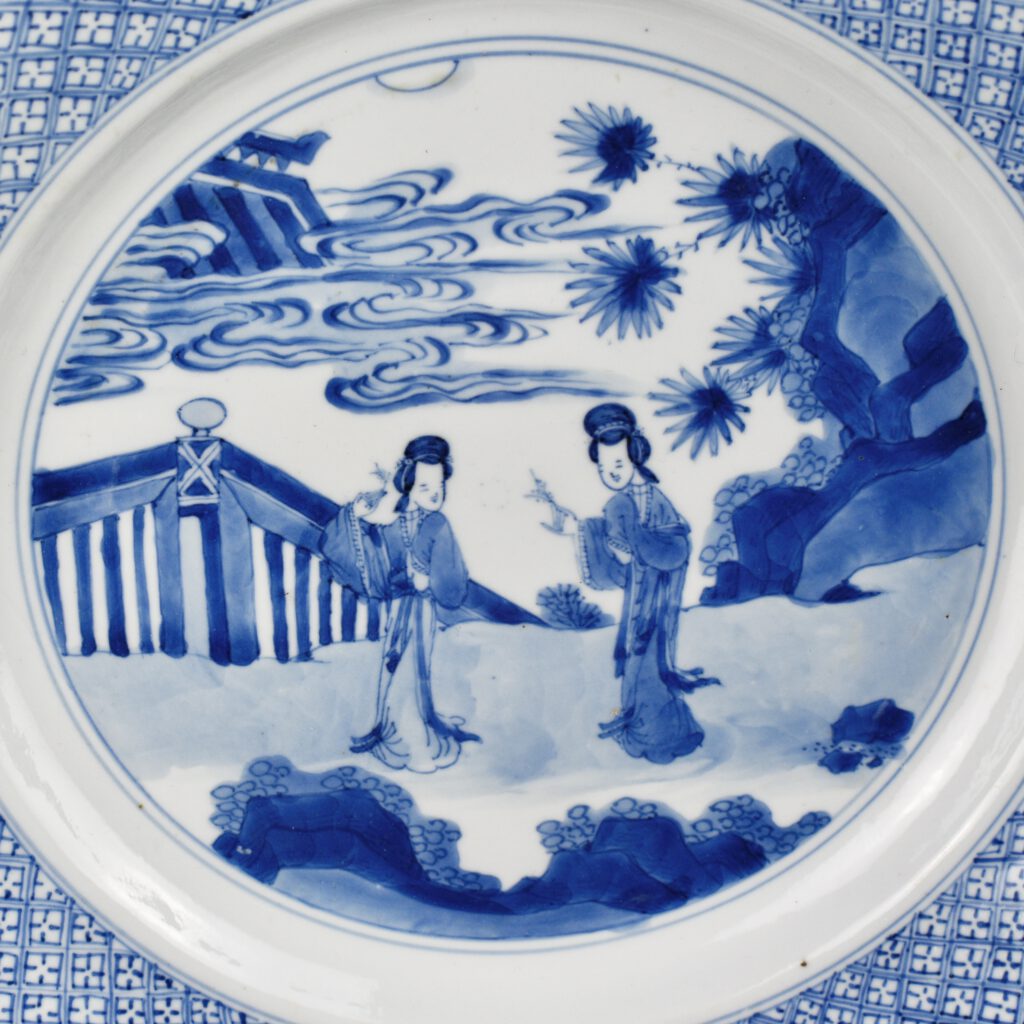
A Kangxi Porcelain Plate Mark and Period Dish
A Large Kangxi Blue and White Porcelain Plate, None-Imperial Kangxi Six Character Mark and of the Period. The central design is of Ladies, `Long Eliza` (Lange Lyzen in Dutch), in a garden landscape. Both ladies holds small sprigs of flowers. The diaper border is broken by four cartouches containing ‘Precious Objects’. The Base with a Six Character Kangxi Mark.
SOLD
- Condition
- Two small glaze chips.
- Size
- 25.8 cm (10 inches)
- Provenance
- Property of the Dutch noble family Quarles van Ufford and thence by descent.
- Stock number
- 25800
Information
Kangxi Figure Decorated Porcelain :
Kangxi blue and white porcelain figure decorated plates of this type were very popular in Holland where the elegant Chinese ladies were referred to as Lange Lyzen. The shape, size and tones of blue employed, as well as the white pearly glaze, are very similar to the well known `Rotterdam Riot` plates which can be dated to c.1692-1695. Unlike the political subject of the Rotterdam Riot plates, the figure as a subject matter was not ephemeral. Therefore it is likely the figure decorated plates were made over a longer period, this is further confirmed by the large extant number known. It is certain that the production must have overlapped as the two types are very similar in every way except the central design.
Reign Marks on Kangxi Blue and White Porcelain :
Kangxi blue and white export porcelain object are sometimes found with the six character mark of the emperor Kangxi (1662-1722) to the base. These none-imperial reign marks are referred to as minyao in Chinese, denoting them as `popular wares` not destined for court use. However the majority of the marked pieces bare the mark of earlier Ming dynasty emperors, some are Jiajing (1522-1566), occasionally Wanli (1573-1620) but by far the most commonly encountered marks are those of Chenghua (1465-1487). David Howard in `The Choice of the Private Trader` (David S. Howard, Zwemmer, 1994) notes that "The Chenghua mark .... was not intended as a forgery, but rather as a compliment to the quality of the piece and to replace the mark of Kangxi who had forbidden the use of his name on porcelain made for export after 1682; a ban which nominally remained in force until the late 19th century". It appears this ban was not enforced, or if it was only partly enforced, as we have had many Kangxi export pieces made after this date (1682) that bare the six character Kangxi mark. It is worth noting that many 19th century copies of Kangxi blue and white porcelain bare a four character Kangxi mark, something you do not on the original, all Kangxi marks on porcelain of the period were of six character form.
